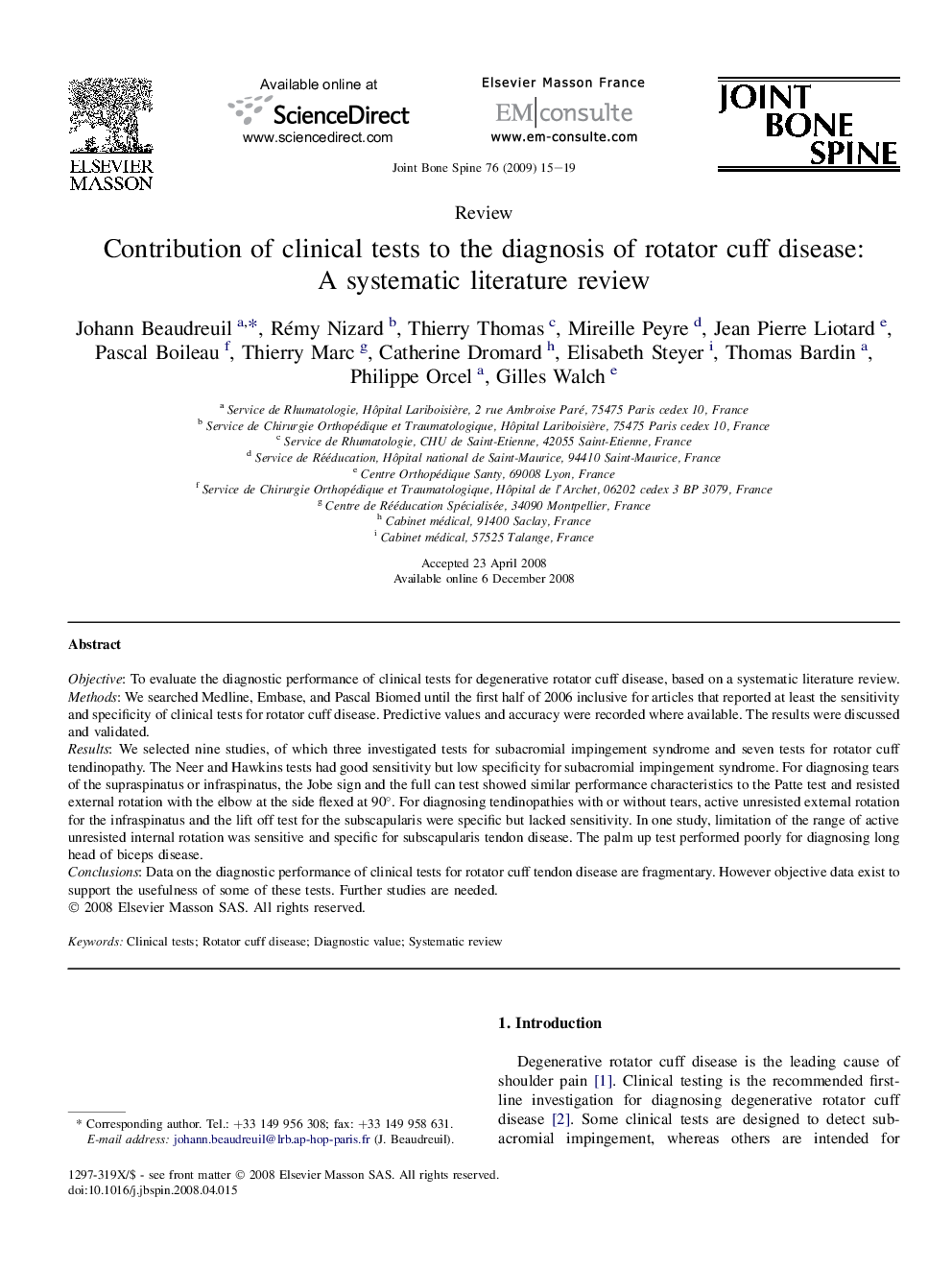| Article ID | Journal | Published Year | Pages | File Type |
|---|---|---|---|---|
| 3366683 | Joint Bone Spine | 2009 | 5 Pages |
ObjectiveTo evaluate the diagnostic performance of clinical tests for degenerative rotator cuff disease, based on a systematic literature review.MethodsWe searched Medline, Embase, and Pascal Biomed until the first half of 2006 inclusive for articles that reported at least the sensitivity and specificity of clinical tests for rotator cuff disease. Predictive values and accuracy were recorded where available. The results were discussed and validated.ResultsWe selected nine studies, of which three investigated tests for subacromial impingement syndrome and seven tests for rotator cuff tendinopathy. The Neer and Hawkins tests had good sensitivity but low specificity for subacromial impingement syndrome. For diagnosing tears of the supraspinatus or infraspinatus, the Jobe sign and the full can test showed similar performance characteristics to the Patte test and resisted external rotation with the elbow at the side flexed at 90°. For diagnosing tendinopathies with or without tears, active unresisted external rotation for the infraspinatus and the lift off test for the subscapularis were specific but lacked sensitivity. In one study, limitation of the range of active unresisted internal rotation was sensitive and specific for subscapularis tendon disease. The palm up test performed poorly for diagnosing long head of biceps disease.ConclusionsData on the diagnostic performance of clinical tests for rotator cuff tendon disease are fragmentary. However objective data exist to support the usefulness of some of these tests. Further studies are needed.
